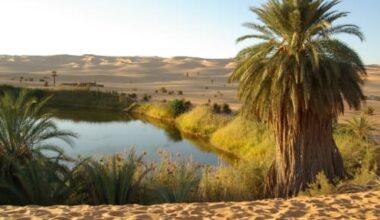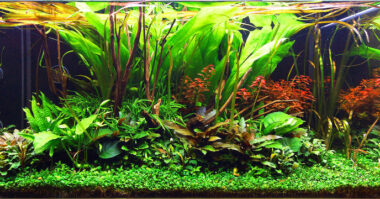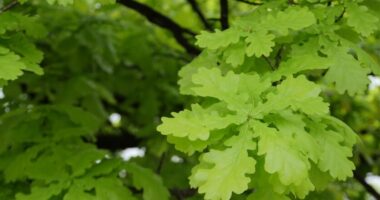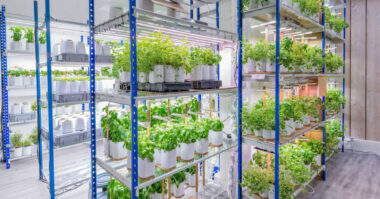Plants are all around us. We recognize trees, ferns and sometimes we notice mosses without necessarily knowing their names. Because of their immobility, we forget their existence. Yet plants are essential to the existence of all.
They constitute one of the three large groups of multicellular organisms in which living beings are distributed. The other two are that of animals and that of fungi (mushrooms). Nearly 2000 new species are discovered each year, and to date, about 400,000 plant species have been identified.
Contents
Why do we need plants?
Plants are indispensable to man and to the problems of CO2 pollution, providing oxygen and absorbing CO2. This explains the importance of large forests, especially tropical forests.
But plants also absorb other toxic substances and therefore play a filtering role. In addition, several plants are used directly against pollution. One example is water hyacinth, which is used in tropical regions to purify water and against eutrophication (a process by which nutrients accumulate in a medium) of water.
Other examples include plants used to absorb toxic heavy metals in and around mines. This is called phytoremediation. Plants are used that are able to resist these metals, absorb them and accumulate them in their tissues. These are often plants of the cabbage family (Brassicaceae) such as the genera Thalspi and Alyssum. These plants extract toxic metals from the soil and thus gradually sanitize it. It is then sufficient to harvest these plants and recover these metals (usually following the incineration of the plants).
Plant cells
Plants together with animals and fungi belong to the large group of multicellular organisms with nuclei and mitochondria in their cells, so-called eukaryotic organisms. A majority of researchers consider that the fossils known to be the oldest eukaryotes would be between 2.1 and 2.7 billion years old.
The animal cell first appeared by absorption by a primitive cell of a bacterium becoming an organelle of it, the mitochondrion. Since the animal cell had to feed on pre-existing organic constituents, it is called “heterotrophic”.
Then, the plant cell was formed in a second time about 1.6 billion years ago by the additional absorption of a photosynthetic blue algae (cyanobacterium) by an animal cell becoming in turn another organelle of the latter, the chloroplast. This new cell capable of producing its own organic matter, called “autotrophic” from mineral salts drawn from the soil and carbon dioxide assimilated thanks to solar energy gave rise to the phylogeny of the green line.
Why are plants the basis of our existence?
Plants are at the base of the food chain, they literally give us something to eat, then to survive, which gives them a fundamental role in the global functioning of the biosphere. They are called “primary producers” because they are capable of producing their own organic matter through photosynthesis. Whether on land or in water, plants are at the origin of any food chain.
Defining a plant is complex. It is not just a flower, not just a ‘still’ green organism. It would take many lines to tell the magnificence of photosynthesis, the complexity of the chemistry at work and a whole novel to tell all the interactions between fungi and plants, between animals and plants. Our civilizations are built on the production of plants, our prosperity is dependent on theirs, and our future will certainly continue to depend on their health and the health of the ecosystems they create.
We must take stock of the sad and worrying state of our forests and of plant diversity in general. The recurring themes of climate change, loss of natural habitats and pollution are all threats to the ecosystems that often rely on plants.
The need to protect plants stems from the fact that they provide the primary energy for all other forms of animal life, but also from the fact that they capture carbon dioxide and produce (together with plants in the oceans) the oxygen we need. Because of the conjugal dependence of plants and animals on each other for pollination and seed dissemination, the disappearance of plant species is often closely linked to the disappearance of animal species.
Why are plants green?
The plants, before any consideration, are green. This green comes from the chlorophyll pigments that allow photosynthesis, that is, the transformation of sunlight into chemical energy. The very history of the appearance of chloroplasts containing chlorophyll pigments is fascinating, but we will not stop there and simply say that the theory suggests that these come from the symbiosis of cyanobacteria.
The tiny cellular machinery of plants allows them to create their organic matter, to grow and multiply. For although plants are immobile, everything that moves is dependent on their labor, using the energy of our star, water, carbon dioxide and minerals they create flowers, fruits, roots and stems.
The ancestors of all plants today come from the aquatic environment, it was necessary to conquer the land. This took a long, very long time, but is at the origin of great upheaval in the history of life on Earth.
Summary
Plants play a major role in the earth’s ecosystem, as they are an essential part of the biosphere. Plants are at the origin of the oxygen we breathe, by transforming the CO2 contained in the atmosphere into O2, they are found at the base of the trophic networks (food chains) and are thus the food of millions of living species.
They occupy almost all terrestrial environments, including the most hostile (deserts, etc.), they help fight against erosion, they produce important compounds, they interact with each other or with animals, in short, without plants, we would not be here.









